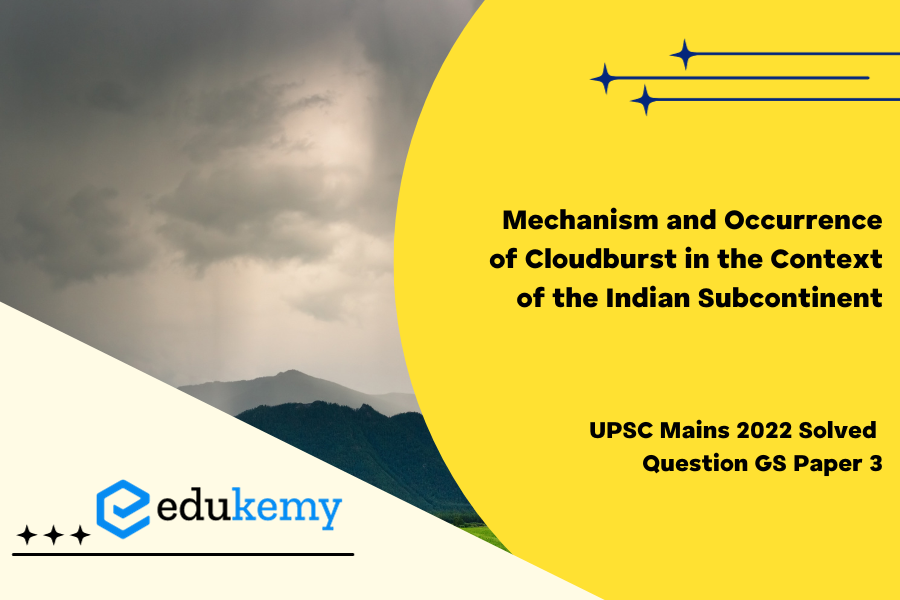Cloudburst in the Indian subcontinent occurs when intense rainfall overwhelms the capacity of local drainage systems, causing sudden, heavy downpours. Recent examples include the 2013 Uttarakhand disaster and the 2021 Himachal Pradesh cloudburst, causing flash floods, landslides, and significant damage due to extreme precipitation in a short duration.
UPSC Mains General Studies Paper – 3 Mains 2022
UPSC Mains Civil Services IAS Exam Question Paper – 2022
Contents
Approach
- Introducing the mechanism and occurrence of cloudburst.
- Describing the phenomenon in context of the Indian subcontinent.
- Mention the examples as asked
- Accordingly conclude it.
Introduction
Cloudbursts are short-duration, intense rainfall events over a small area. According to India Meteorological Department (IMD), it is a weather phenomenon with unexpected precipitation exceeding 100 mm/h over a geographical region of approximately 20-30 square km. In the Indian Subcontinent, it is generally observed in the Himalayan region.
Body
Mechanism of cloudburst
When moisture laden air moves the hilly terrain, it forms a vertical column of cloud also known as cumulonimbus cloud. These clouds are generally associated with rain, thunder and lightning. These unstable clouds cause an intense rainstorm over a small area and are locked in the ridges and valleys between the hills.

Occurrence of cloudburst
The relative humidity and cloud cover is at the maximum level with low temperature and slow winds because of which clouds may get condensed at a very rapid rate and result in a cloudburst.
Two recent examples of cloudbursts in the Indian subcontinent are:
- Uttarakhand Cloudburst (2021): In August 2021, the Chamoli district of Uttarakhand in India witnessed a devastating cloudburst. Heavy rainfall triggered flash floods and landslides, leading to the loss of lives and widespread destruction. The rugged terrain and the convergence of monsoonal moisture were contributing factors to this cloudburst event.
- Ladakh Cloudburst (2021): In July 2021, the Union Territory of Ladakh, located in the Himalayas, experienced a cloudburst. The sudden deluge resulted in flash floods and significant damage to infrastructure. The mountainous landscape, along with the interaction between monsoonal moisture and local topography, played a role in the occurrence of this cloudburst.
Conclusion
- With rising occurrences of cloudburst every year, it has become necessary to install a dense network of weather instruments, and computing capabilities especially for hilly regions.
- The combination of complex topography, monsoonal weather patterns, and convective instability contributes to the occurrence of cloudbursts, which can have severe consequences in terms of flooding, landslides, and damage to life and property.
In case you still have your doubts, contact us on 8792740517.
For UPSC Prelims Resources, Click here
For Daily Updates and Study Material:
Join our Telegram Channel – Edukemy for IAS
- 1. Learn through Videos – here
- 2. Be Exam Ready by Practicing Daily MCQs – here
- 3. Daily Newsletter – Get all your Current Affairs Covered – here
- 4. Mains Answer Writing Practice – here


